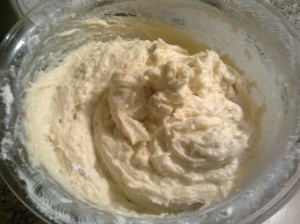 Proper Bread isn’t high on my list of baking priorities (the last time I made bread that wasn’t pitta, naan or chapattis was in May), but I’ve had to start practicing again ahead of holding a Spanish-themed housewarming party next month, for which I will need to bake some Spanish bread. The bread in question is this rustic-looking thing, pan Gallego, which hails from the Galicia region.
Proper Bread isn’t high on my list of baking priorities (the last time I made bread that wasn’t pitta, naan or chapattis was in May), but I’ve had to start practicing again ahead of holding a Spanish-themed housewarming party next month, for which I will need to bake some Spanish bread. The bread in question is this rustic-looking thing, pan Gallego, which hails from the Galicia region.
Pan Gallego is supposed to contain a mixture of pumpkin seeds, sunflower seeds and millet, but I only had sunflower seeds so I just used those. It’s made using a mixture of strong white and wholemeal flour, along with a dash of olive oil. The recipe I used called for fresh yeast, but I only had dried and that worked perfectly.
 This was a rather time-consuming bread to make in terms of kneading and proving, but it was well worth the effort. The bread rose nicely both during proving and baking, making for a huge beast of a bread! Although I was rather lax in allowing it to burn slightly on top, the interior is delicious and, to be honest, I hate wasting food so I’ve been eating the burnt bits anyway, and it’s still nice!
This was a rather time-consuming bread to make in terms of kneading and proving, but it was well worth the effort. The bread rose nicely both during proving and baking, making for a huge beast of a bread! Although I was rather lax in allowing it to burn slightly on top, the interior is delicious and, to be honest, I hate wasting food so I’ve been eating the burnt bits anyway, and it’s still nice!
I’ve so far had this on its own, toasted with butter and honey, with manchego cheese and to mop up a half-invented vegetarian Spanish stew, and it’s been lovely on every occasion. There’s still lots left and I’m looking forward to trying it with other things!
The recipe
Can be found in Baking by Martha Day. A very similar recipe can be found online here.







